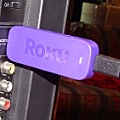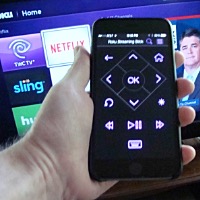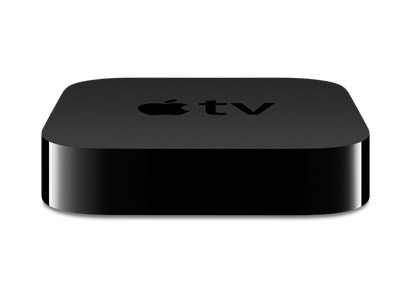- By -
- Around Town
 Print
Print  Every year I wrestle with Time Warner to get my costs down, as they continue to raise prices for cable TV. I don't begrudge them the Internet piece of my monthly bill, but I believe the cost of television is much too high. While you can usually get a better price from them if you insist, especially if you threaten to drop the service, it is an annual hassle that doesn't make you feel warm and fuzzy toward the company. it take a chunk of your day, working up to the words they don't want to hear: I am going to cancel my TV service.' That begs the question, what happens if the cable company calls your bluff?
Every year I wrestle with Time Warner to get my costs down, as they continue to raise prices for cable TV. I don't begrudge them the Internet piece of my monthly bill, but I believe the cost of television is much too high. While you can usually get a better price from them if you insist, especially if you threaten to drop the service, it is an annual hassle that doesn't make you feel warm and fuzzy toward the company. it take a chunk of your day, working up to the words they don't want to hear: I am going to cancel my TV service.' That begs the question, what happens if the cable company calls your bluff?A lot of people are dropping cable TV. USA Today reported that residential Time Warner Cable video subscribers fell by 38,000 in the last quarter of last year. More and more viewers are choosing to forgo traditional TV packages for content they can stream over the Internet.
Viewers are flocking to streaming services like Netflix, Amazon Prime and recently even HBO joined the streaming craze. You can stream on your computer, but if you want to watch on your TV you need a streaming device. The top rated device is the Roku 3 and other Roku devices. That is followed by Apple TV and the Amazon Fire Stick, with Google's Chromecast stick filling out the roster. You will need a high speed connection for all these devices, but the savings will make your monthly Internet charge a better deal.
 The free Roku app turns your iPhone into a remote control.Most reviewers say that if you want the best device go with a Roku. But if you have other Apple devices the connectivity and compatibility between Apple devices makes it the best choice for you.
The free Roku app turns your iPhone into a remote control.Most reviewers say that if you want the best device go with a Roku. But if you have other Apple devices the connectivity and compatibility between Apple devices makes it the best choice for you.This is probably a bad time to review the Apple TV, because Apple announced a major upgrade Wednesday that they plan to start selling in late October. The device was first introduced in 2007, and while it has been updated three times since then, the updates haven't been at all dramatic. I have used an Apple TV for some years now, and have been very, very happy with it. But in this world where it is becoming easier to drop cable, you may want more than one streaming device.
Why? Apple doesn't like apps on its hardware that can sell you things unless Apple gets a hefty cut. And Apple doesn't like iTunes on non-Apple devices (except Windows -- they'd be losing a huge market if they didn't support Windows). The upshot is that there is no Amazon Prime TV on Apple TV, and no iTunes on Roku or the Amazon Fire Stick. If you use an iPhone, iPad and/or a Mac the Apple TV is a great device because they are all compatible. You can stream Amazon Prime (or just about anything) from your phone using AirPlay, so you don't really need another device. But my family has found that if your phone battery is low you have to scramble for a charger while binge watching on our Prime account, and sometimes it loses its connection, often at the most exciting dramatic moments.
 The little purple device plugs into an HDMI port on your TV. The remote is simple and easy to use.
The little purple device plugs into an HDMI port on your TV. The remote is simple and easy to use.So I decided to try the Roku Streaming Stick. It is the smallest of the Roku line, literally a stick that plugs directly into an HDMI port on your television set, meaning you don't need to buy an expensive HDMI cable. The setup is easy. Plug it in. Connect to your wifi. Enable the device on your Roku account. The last was the most time consuming part, and a big aggravating, since I did it on a phone with its small keyboard. And I was not happy to have to enter credit card information, which they explained would make my future purchases go faster -- mainly because I didn't intend to buy anything. Without all that new account stuff the whole setup would have taken five minutes.
Still, it didn't take more than 15 or 20 all told, and once set up there were some very nice surprises right from the get-go. I have used the Apple TV for a number of things, including streaming music from my computer, watching YouTube videos and viewing pictures. But the main thing has been Netflix. In fact, with the dearth of interesting TV fare on cable right now we have been watching shows almost exclusively on Netflix and Amazon Prime recently. Evidently Roku thinks those are the ones most people will watch, because the top two convenience buttons on the bottom of the remote take you directly to those two services. Two others take you to rdio and Google Play.
 The Roku version (left) of Netflix seems a little easier to see and a little easier to use than the Apple version (right).
The Roku version (left) of Netflix seems a little easier to see and a little easier to use than the Apple version (right).At first glance the Netflix app is actually nicer on the Roku than on the Apple TV. It appears simpler and the choices are a little easier to see. The Prime app works in the same way. I always like things that work the same way on the same device -- it means less learning curve, and lets face it, TV has been successful as much because it's easy to use as for the shows we watch.
One surprise was the Time Warner app, like the one they have for the iPhone. If you are a cable subscriber you can watch live TV on it, at least the channels contractually allowed, as you can on the iPhone version. But it doesn't manage the DVR like the iPhone version does. Why would you even need it? Because it's pretty easy to drop your streaming device into your baggage when you travel and have all the streaming TV options you get at home any place you travel to (as long as there is a high speed Internet connection).
The new Apple TV looks a lot like the old Apple TV, a little black box that sits on your TV table and connects by HDMI cable. The key innovations touted on Wednesday are a whole new remote control with a touch screen and a Siri button that allows you to access Apple's voice assistant and just tell the TV what you want to watch.
 The old Apple Remote had a few buttons. the new remote still has only a few actual buttons, including a Siri button for voice control, but it also has a touch pad, an accelerometer and gyroscope and volume control, and supports USB 4, has a lightning connector, and reportedly holds its charge for three months.
The old Apple Remote had a few buttons. the new remote still has only a few actual buttons, including a Siri button for voice control, but it also has a touch pad, an accelerometer and gyroscope and volume control, and supports USB 4, has a lightning connector, and reportedly holds its charge for three months.If you are used to swiping up and down or to the side on your phone or tablet, you can do the same on the new touch remote. That will be handy when playing games or navigating the Zillow app or using shopping apps.
"Our vision for TV is simple and perhaps a little provocative," Apple CEO Tim Cook said Wednesday. "We believe the future of television is Apps."
Essentially he means that the Apple TV will do a lot of the same things an iPhone does in a lot of the same ways. The remote also has an accelerometer and gyroscope and volume control, and supports USB 4, has a lightning connector, and reportedly the battery will work for three months per charge. The new Apple TV has an App Store, and you can also play games on it including Guitar Hero or Crossy Road (which looks a lot like the old Frogger to me). The Roku already has a wide selection of games.
Cook said that the new tvOS (operating system) is based on iOS. Apple is counting on 11 million registered developers to use the system to support the new platform with thousands of new apps.
The Siri Remote theoretically brings voice control to TV, not entirely new. You can tell Siri to do things like 'skip ahead seven minutes' or ask 'what did she say' to make Siri skip back 15 seconds and temporarily turn on captions. She will also suggest movies or TV shows based on your voice requests. The remote has a Siri button on it so you can access Apple's voice assistant, which reportedly has been improved for the upcoming launch of iOS 9. In my opinion she needs much improvement, and the jury is still out on whether it will be sufficient.
Roku has a free phone app, which I downloaded on my iPhone. The main feature is that it turns your phone into a remote control, so if you can't find the one that came with the device you can still watch TV. I don't thik I will use it much, unless I lose the remote control. You can also buy new channels in the App. And that is one of the attractions of the Ruku, that you can buy channels and channel packages that could total over 2,000 channels if you are a major TV nut.
 The old Apple TV is a little square box that sits near your TV and connects with an HDMI cable. The new Apple TV looks a lot like this but will be more capable.
The old Apple TV is a little square box that sits near your TV and connects with an HDMI cable. The new Apple TV looks a lot like this but will be more capable.Which brings us back to the original question: is the state of streaming TV such that you can 'cut the cord' and drop cable TV for a savings that makes it actually attractive to do so? Because while Time Warner has clunky and slow software that drives their TV service, my only big beef is the cost. Well, that and the fact that they don't offer à la carte channel lineups.
What I am not seeing in the Roku choices are the broadcast networks and BBC America. There are ABC news apps. A CBS app has some of their current shows, but not all. You have to be a cable customer to access the shows on the Fox app. NBC has news and sports apps.
Sling TV on the Roku has a promising package that includes ESPN, MC the Food Network, A&E, the History Channel, HGTV, TNT, TBS, CNN, the Travel Channel, Cartoon Network, ABC Family and Lifetime, among others for $20 per month. I like those choices, but I would like to keep the broadcast networks, and I do like BBC America.
There have been major rumblings about Apple putting together a streaming channel package, but it has been reportedly held up by contract negotiations with the various networks. For some time it was hoped that it would be announced at Wednesday's Apple event, but that was not to be. Rumor has it the broadcast networks will be a part of the package, except, possibly NBC (which is owned by Comcast). Before dropping cable I want to see what Apple will come up with, as the rumors make it sound promising.
However, looking at today, you can buy seasons of current shows on iTunes, Amazon and other services. I can think of three shows I would really love to see in the upcoming season, and a few that I could either watch new or wait for them to appear on Netflix. The newest season of The Good Wife goes for $45 on iTunes. Extrapolating, I could spend around $135 for three shows, plus $240 for a year of the Sling TV package. We already have Netflix and Prime (we got Prime for the free shipping, which more than pays the annual fee, so it's like getting really great free TV shows because they are included in the package), so I won't include those in this calculation. So far that's $375 for most of the shows/channels my wife and I care about. Even if we buy more shows on iTunes or Amazon, it is a heck of a lot cheaper than cable, and we could never run out of shows to watch if we couch-potatoed 24/7 (which we don't do).
The price range for streaming devices ran from around $39 to about $100 until now. The top of the line Roku 3 goes for $100. The Amazon stick goes for $39, and the Roku stick for $49. Not long ago Apple reduced the price of its Apple TV from $100 to $69. The new Apple TV will go for $149 for the 32GB model, and $199 for a 64GB version.
Apple fans will tell you that you pay more, and you get what you pay for. But I would say the general wisdom still applies. There is a lot to like in the Roku device. It does what the Amazon device does plus a lot more. It certainly seems to have the most options right now, and appears to be adding new ones regularly. The old Apple TV is wonderful. I have loved using it for years, and its integration with my phone and computer make entertainment robust and convenient. The new Apple TV brings new features while maintaining compatibility with other Apple devices, but I am not sure it really does a whole lot more than the Roku already does.
So the conventional wisdom seems to hold up, even after the new Apple TV comes on the market at the end of October. If you already use Apple devices the Apple TV's place in that universe is well worth it interactiveness with your iPhone, iPad, Mac, or iWhatever alone. If you're not an Apple user, Roku is the best choice.
v11i35



